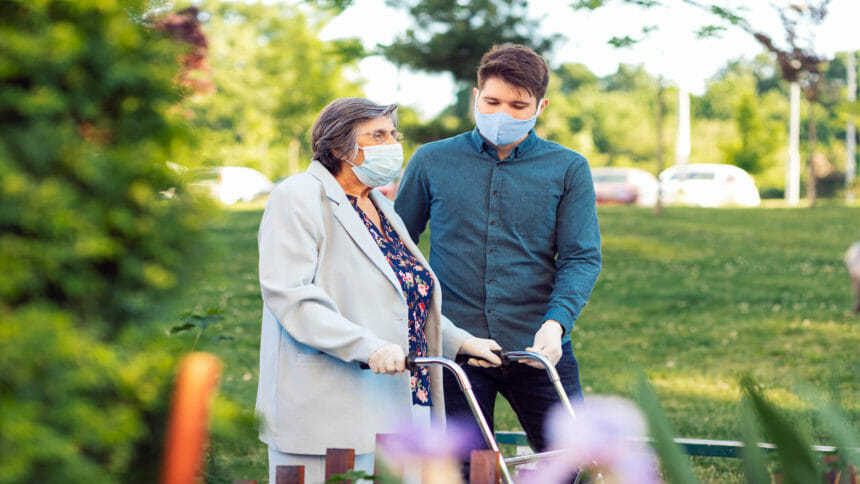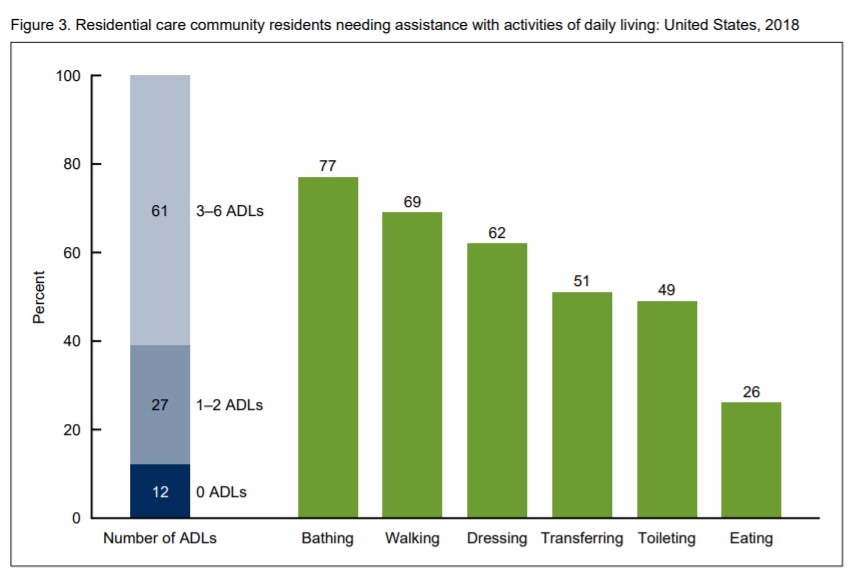
Bathing, walking and dressing are the most common activities of daily living that residents of assisted living or similar residential communities need help with, according to a new data brief from the Centers for Disease Control and Prevention’s National Center for Health Statistics. The report sheds light on the characteristics of the 918,700 residents in those communities who received long-term care services as of 2018.
“With the aging of the U.S. population, the numbers of residential care community residents will likely increase, becoming a substantial segment of the long-term care population,” according to the report, titled “Residential Care Community Resident Characteristics: United States, 2018.”

ADL assistance: Almost two-thirds (61%) of residents needed assistance with three or more activities of daily living. According to the report, 77% needed assistance with bathing, 69% with walking, 62% with dressing, 51% with transferring in and out of a bed or chair, 49% with toileting, and 26% with eating.
Age: 55% of residents were 85 and older, 38% were aged 65 to 84 years, and 7% were aged fewer than 65 years.
Gender: 67% of residents were female, and 33% were male.
Race: 89% of residents were non-Hispanic white, 6% were non-Hispanic Black, and 5% were another race or ethnicity.
Medicaid: Almost two in 10 residents (19%) were Medicaid beneficiaries. Among residents aged 85 or older, 11% were Medicaid recipients; among those aged 75 to 84, 21% were Medicaid beneficiaries; among those aged 65 to 74, 38% were Medicaid recipients; and among those aged fewer than 65 years, 20% were Medicaid beneficiaries.
Diagnoses: About half of residents (55%) had diagnoses of high blood pressure, and one-third (34%) had diagnoses of Alzheimer’s disease and other dementias. Other diagnoses were depression (27%); arthritis and diabetes (20% each), heart disease (17%), osteoporosis (12%), chronic obstructive pulmonary disease (11%), stroke (10%) and cancer (9%).
The report is based on data from the National Study of Long-Term Care Providers. The previous report was issued two years ago.




